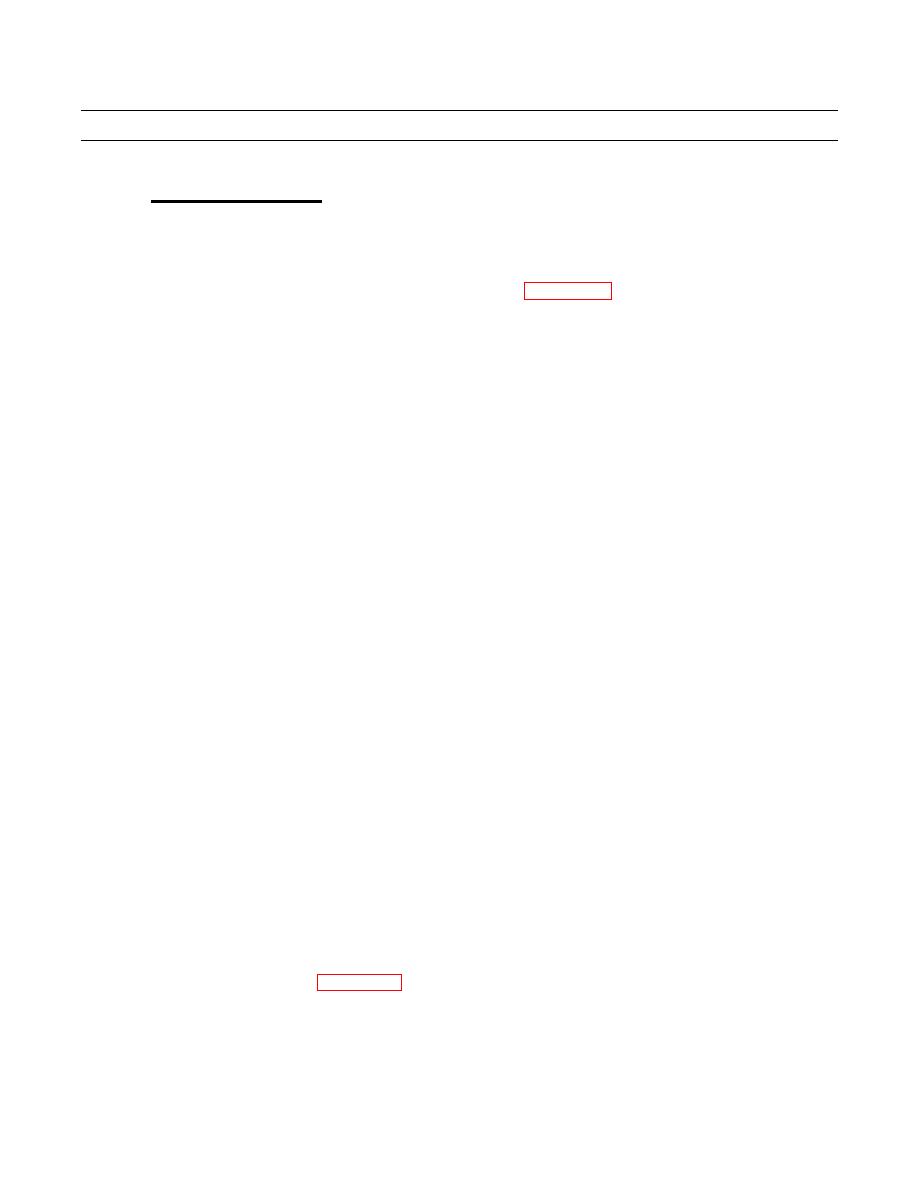 |
|||
|
|
|||
|
|
|||
| ||||||||||
|
|
 TM 9-2320-303-24-2
REAR-REAR AXLE DIFFERENTIAL CARRIER REPAIR - CONTINUED
0259 00
DIFFERENTIAL CARRIER ASSEMBLY
Assemble Pinion and Cage.
a.
CAUTION
Take care not to damage the bearing rib in the cage.
(1)
Coat the bearings (27 and 39) with gear lube (Item 33, WP 0312 00) and if new cups are to be installed,
press firmly against the pinion cage (26) shoulders.
(2)
Press the rear (inner) bearing (39) firmly against the pinion shaft (25) shoulder with a suitable sleeve that
will bear only on the bearing inner race.
(3)
Insert the pinion shaft (25) and bearing (39) assembly in the pinion cage (26) and position the spacer (36)
or spacer combination over the pinion shaft.
(4)
Press the front (outer) bearing (27) and washer (35) firmly against the spacer (36).
(5)
Rotate the cage (26) several revolutions to assure normal bearing contact.
(6)
While in the press, under pressure, check the bearing preload torque. Wrap a soft wire around the cage (26)
and pull on a horizontal line with a pound scale.
(7)
If a press is not available, the pinion nut (30) may be tightened to the correct torque and the preload
checked. The correct pressures and torque for checking the pinion bearing preload are as follows:
REQUIRED PRESSURE
REQUIRED NUT
TO OBTAIN CORRECT
TORQUE TO OBTAIN
PINION SHAFT
PRELOAD
CORRECT PRELOAD
THREAD SIZE
1 1/4 inch x 12
700-900 lb-ft
11 tons
(949-1220 Nm)
(10 metric tons)
NOTE
Use rotating torque, not starting torque.
(8)
If rotating torque is not within 20-45 lb-in (2.3-5.1 Nm) for new bearings, or 10-22 lb-in (1. 1-3.4 Nm) for
reused bearings, use a thinner spacer (36) to increase or a thicker spacer to decrease the preload.
(9)
Press the yoke (29) against the forward bearing (27) and install the pinion shaft washer (31) and nut (30).
(10)
Place the pinion and cage assembly in the carrier (15) and secure with capscrews (37) and washers (38).
Hold the flange and torque the pinion shaft nut (30) to 700-900 lb-ft (949-1220 Nm). The yoke (29) must
be held with a suitable tool or fixture to tighten the nut.
(11)
Recheck the pinion bearing preload torque. If rotating torque is not within 15-25 lb-in (1.7-3.8 Nm), repeat
the foregoing procedure.
(12)
Hold the yoke (29) and remove the pinion shaft nut (30) and washer (31). Remove the yoke.
(13)
Lubricate the oil seal (33) and coat the outer edge of the seal retainer (34) with a non-hardening sealing
compound (Item 14, WP 0312 00). Press the seal and retainer against the shoulder of the pinion cage (26)
with a seal driver.
(14)
Install slinger (28) and wiper (32).
(15)
Press the yoke (29) and washer (35) against the forward bearing (27) and install the washer (31) and pinion
shaft nut (30). Torque to 700-900 lb-ft (949-1220 Nm).
0259 00-4
|
|
Privacy Statement - Press Release - Copyright Information. - Contact Us |